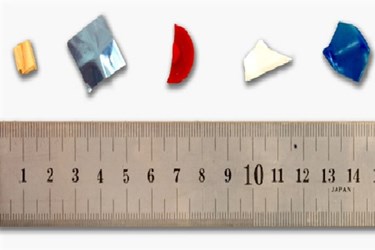5 Methods For Foreign Body Contamination Detection

By Melissa Lind, contributing writer
Determining what type of detection system(s) you need — based on the type of food you are processing and the type of contaminants you expect — can help you avoid missing the mark and making investments in the wrong place
There are multiple types of foreign body detection systems ranging from simple to complex. Finances play a part in your investment not only from dollars put into technology, but also in mitigating risks. The decisions can affect consumer confidence, not to mention the cost of a recall. Effective implementation of a foreign object detection system requires a balance between too little detection, too much detection, and simply avoiding investments in the wrong type of detection. Some systems are well-known, some are rarely considered, and some may be thought of as prevention rather than detection. However, they all have a role for certain types of food or processing lines and warrant consideration.
Separation Systems
These systems are often the simplest of avoidance systems that prevent the foreign bodies or wrongly-sized products contaminating the finished product. Sieving and filtration methods can’t remove all contaminants, but are especially useful in the raw material and ingredient stages of food production lines.
Magnets
Magnetic fields can be produced by physical magnets or through the use of electromagnets. They are used to detect ferrous metal fragments, are fairly simple to install, and much less expensive than some other methods. Naturally, the drawback is that they will not detect non-ferrous metal such as aluminum or brass. In addition, they do not work well on spheroid fragments and cannot be used effectively in processed or packaged food such as baked goods, canned foods, and bottled liquids.
Foreign Body Detection Of Metals In Food Manufacturing
Optical Sorting
Optical sorting uses cameras or lasers to weed out contaminants and conglomerations by size, shape, or color. They can be used with harvested foods and dry products and are effective at not only identifying foreign objects, but at providing some quality assurance in terms of finished-product assessment. Optical sorting systems can range from very simple to more complex systems which use hyperspectral imaging complemented by software intelligence to identify specific defects that may not otherwise be detected within a certain product.
Vision Inspection: Now Vital For Food Safety
Metal Detection
There are actually several types of metal detection systems, each having its own place in food manufacturing lines. Pulse metal detectors identify large metallic objects. These work well in bulk containers of raw materials, early in the processing line, and can help you avoid damage to your equipment.
Ferrous-in-foil systems can identify ferrous metal fragments in foil containers. This makes it a unique system as the more common balanced coil metal system doesn’t work as well with certain types of metallic packaging.
How To Choose & Use Industrial Metal Detectors
Balanced coil metal detectors are the most common type and are useful for detecting a wide variety of metals in finished products and dry products whether packaged, or unwrapped, depending on the size of product and transport system. They can identify most types of metal including fragments down to 1mm in size. They use high-frequency radio waves but do not work well with wet or salty products or with most types of metallic packaging.
X-Ray
X-ray systems are fairly common and well known. They can detect a variety of foreign bodies such as glass, dense plastic, conglomerations, bones, and other objects with different densities. They are easy to operate and can work efficiently in high-production lines. Newer systems include computer-based modeling, which requires minimal user intervention. They cannot always detect very small contaminants such as hair, fine glass, or low-density contaminants such as cardboard, wood or insects, but they are applicable to a wide variety of products including baked goods, dry products, and prepared or packaged foods.
